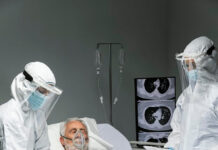Krsnaa Diagnostics has formed a strategic alliance with Medikabazaar and United Imaging to launch over 30 imaging centers in Tier-2 and Tier-3 cities across India, backed by an investment of more than ₹300 Crore. This partnership aims to enhance access to diagnostic services in underserved regions, focusing on improving patient care in small towns and semi-urban areas.
The collaboration combines cutting-edge imaging technology with healthcare expertise to deliver advanced radiology solutions to remote communities, ensuring timely and accurate diagnostic testing. Medikabazaar will deploy advanced imaging technologies across Krsnaa’s diagnostic network, aligning with both organizations’ goals of expanding access to quality healthcare services.
Rajendra Mutha, Chairman of Krsnaa Diagnostics, expressed enthusiasm about the partnership, calling it a transformative move for the Indian diagnostics industry. “This collaboration enables us to extend our reach into underserved areas while offering state-of-the-art imaging services at competitive prices,” he said. He also highlighted the trust United Imaging and Medikabazaar have in Krsnaa’s operational excellence.
As reported by expresshealthcare, this initiative addresses the rising demand for high-quality diagnostics in smaller cities and complements ongoing Public-Private Partnership projects across India, ensuring the benefits reach those most in need.
Dinesh Lodha, Group CEO of Medikabazaar, emphasized the impact of the collaboration, stating, “This partnership between two of India’s largest players in medical supplies and diagnostics will revolutionize healthcare accessibility, providing affordable and timely advanced diagnostics to underserved populations. It supports India’s healthcare goals by improving infrastructure and healthcare delivery in underdeveloped regions.”
























